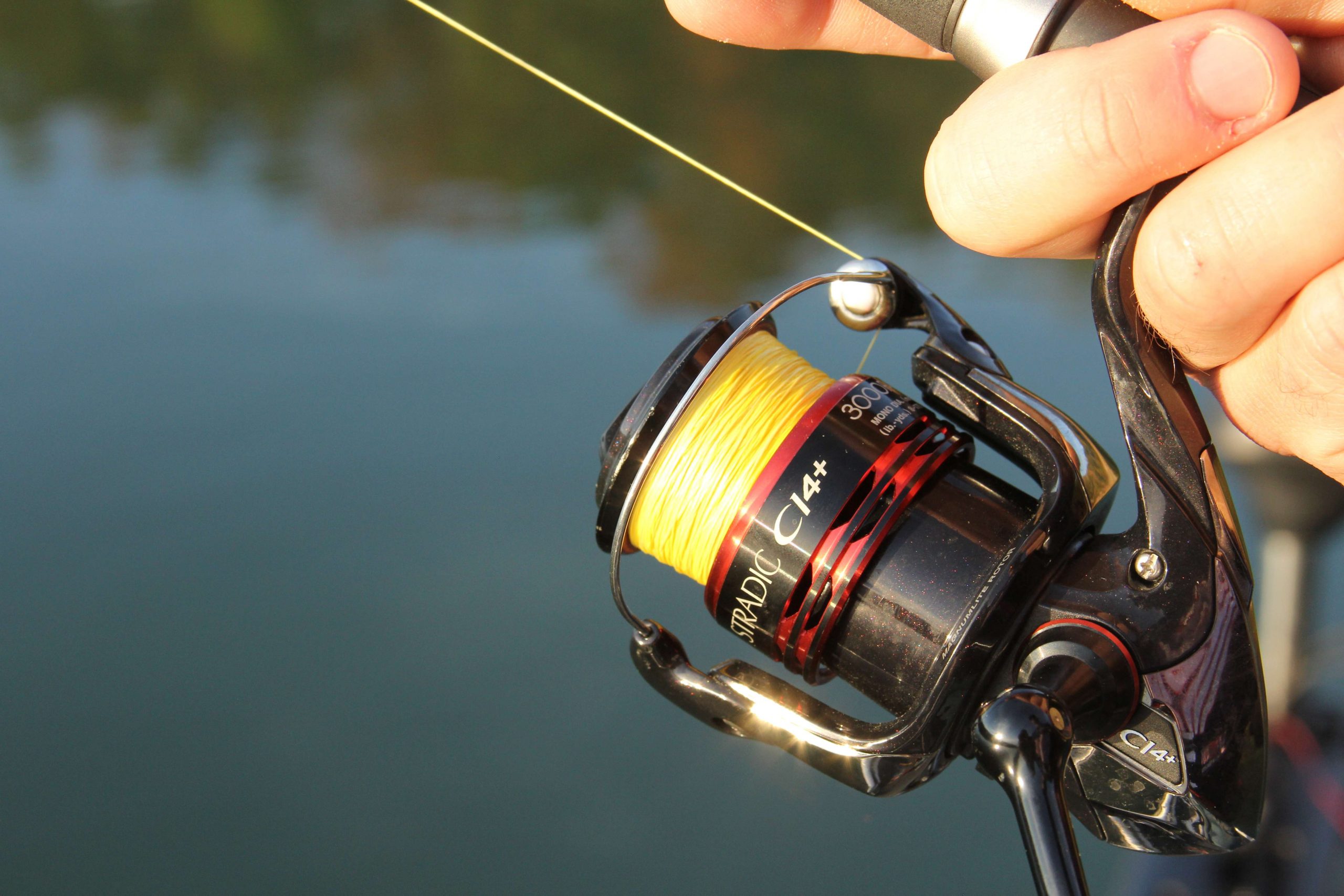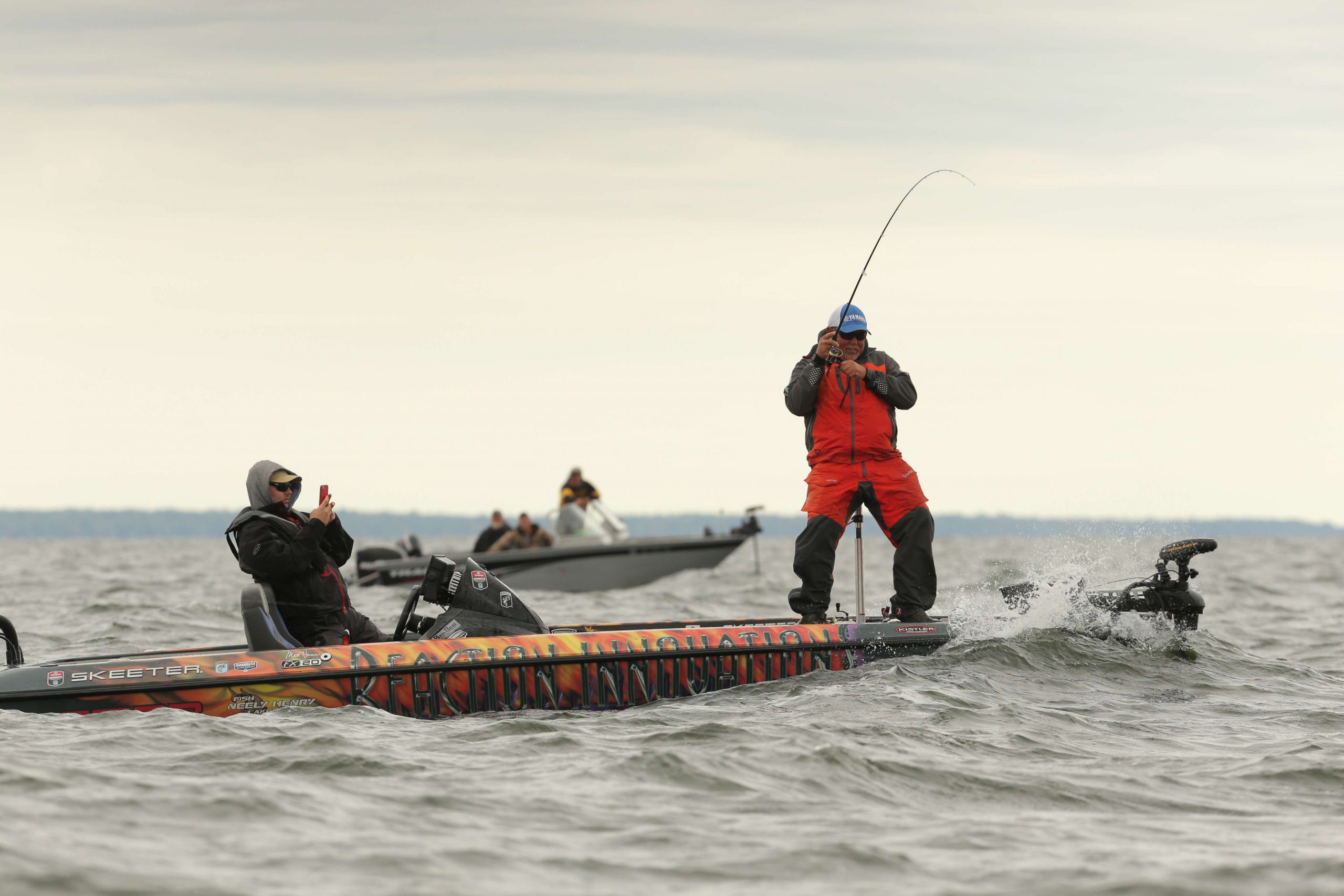
Those flamboyant colors that have been showing up on everything from boats to sneakers and tournament jerseys are finding their way onto Bassmaster Elite Series anglers’ spinning reel spools.
While vivid colors may be part of today’s trendy fashion statement, the brightly colored superlines on spinning reels are there for a practical reason: visibility.“When I first saw it on a reel, I was very skeptical,” said pro Matt Herren, who uses chartreuse YGK Braid for shaky heads, drop shotting and any finesse-style bottom baits. “We’ve always been taught that you have to camouflage your line so fish won’t see it. But since making the switch to bright line about five years ago, I’ve caught more fish deeper than ever before.”
You’ll find lime green, light blue, pink, red and yellow braided line on spinning reels. Color choice is strictly a matter of preference and what your eyes pick up best.
“There are days when that small-diameter, dark-colored braid is so hard to see, such as during low-light conditions,” Herren added.
To offset the visibility of the bright line under the water, anglers are tying 7- to 10-foot lengths of fluorocarbon leader to the ends of the braid so there is a good distance between the brightly colored line and the lure.
The superline/spinning reel trend actually began years ago when the pros gravitated toward small-diameter braids on spinning reels for a number of reasons. First, you can reduce line diameter without sacrificing breaking strength. The small diameter, coupled with the smoothness of the lines, increases casting distance substantially.
In addition, today’s small-diameter superlines are far more manageable than fluorocarbon or monofilament. They also are more durable, reducing the need to change line frequently.
“I was always dealing with line twist and tangles with straight fluorocarbon,” recalled fellow pro Matt Lee. “I was always fighting it, but since I’ve switched to braid, those problems are gone.”
More importantly, braid is extremely sensitive.
When finesse fishing, the ability to feel those subtle bites, not to mention the bottom content, keeps anglers in tune with the lure.
However, the drawback to using small-diameter, dark braid is visibility. Bright lines solve that problem.
“With the bright-colored lines, you will see bites that you may not feel, especially if the wind is blowing or a fish picks up the bait and moves toward you,” explains Lee, who uses yellow or red PowerPro.
He recalled one instant during a tournament on Lake St. Clair, Mich. He was throwing a spy bait, a slow-sinking minnow bait with tiny props on each end.
“I’d bomb a cast out there and watch my line sink before I began reeling it through the water column,” explained Lee. “The bass often would hit at the end of the cast while the bait was sinking, and I may not have seen that with darker lines. I could monitor the rate of fall and would notice that it would speed up at times. I’d set the hook and there was a fish.”
Lee said he never felt the spy bait bite and would have never seen it with dark-colored braid or even fluorocarbon.
“When fishing a real light bait or a sinking bait, the ability to follow the sink rate of the line can be critical,” he added.

Russ Lane said he also has seen a significant difference in his spinning rod success since switching to bright lines.
“I turned 44 recently, and one thing I’ve really noticed is I can’t see as well as I used to,” he said. “When I was using the darker colors, I was missing a lot of fish, especially in a breeze, because of the way the line blows around.”
He and other pros went to Sunline and asked for high-visibility braid.
“Once I started using that, I stopped missing bites,” he said.
The brightly colored superline craze isn’t limited to spinning reels, although darker lines remain the most popular with pros for flipping and pitching. Brighter line isn’t necessary on topwater rigs, where anglers automatically see the strike.
Perhaps the biggest reason the colored line hasn’t become more popular on big rods is because it’s not necessary. The larger-diameter braids are easier to see than the dainty stuff pros use on spinning reels.
However, if you subscribe to Greg Hackney’s braided line philosophy for flipping into thick grass, it likely would work there, as well.
Hackney has always used 65-pound braid, regardless of the water clarity. He rarely ties on a fluorocarbon leader and doesn’t worry about the line spooking fish.
“When (you’re) pitching into grass, the bass don’t see the line because it’s more of a reactionary strike,” he said. “That bait falls in their face and they grab it.”





